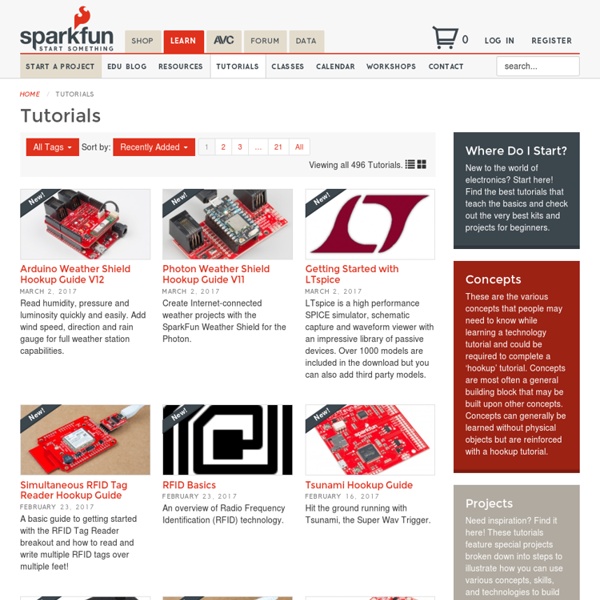



Learn About Electronics - Home We Are Makers: Documenting a Burgeoning Movement, by Nathan Driskell Posted by core jr | 23 Jul 2013 | Comments (0) Everything in the built world has been designed and crafted by someone. This is not news to most of us, but I'm amazed that even as engineering and design have taken more visible roles in shaping how we experience the world, there are still so many who see themselves as consumers, not makers. We Are Makers is a new short film that explores the workshops and institutions shaping a new generation of makers and designers. It's the first documentary on the Maker Movement—a global cultural shift aimed at empowering more people to create. I work with a team of media producers and storytellers at Abilene Christian University, and when we were approached to produce a film on making in education, the goal was purely local, something focused on our immediate community. It's clear today there's a growing emphasis on craftsmanship and a return to making with the hand, that we can and should reclaim this somehow-forgotten part of our human identity.
Freeduino Blog | JeremyBlum.com | v3.1 Reading my book supports STEAM education. Yay! It’s no secret that I care very deeply about the current state of engineering education. If you’ve been following my blog for a long time, you might know that I’ve given talks on the state of engineering education in America, that I’ve led a cross-country bus trip to teach sustainable engineering and architecture, that I’ve traveled around the world to share my love of robotics, that I’ve taught engineering programs in NYC, and that I’ve been producing free educational engineering videos since I was 16. I’ve put considerable thought into specifically where I want the money to go. Thanks again for your help and support.
Learn Electronics Online | Easily master the basics of electronics theory and practice The 'Maker Movement' Inspires Shift in STEM Curriculum We live in a world of mass-produced products and modern technology -- technology that has made it easy for an individual to create and distribute customized and unique items sans manufacturers. And this ability has created the maker movement -- "an evolution of millions of people who are taking big risks to start their own small businesses dedicated to creating and selling self-made products," according to the Huffington Post. And this movement is starting to make headway in some science, technology, engineering and math curriculum. A shift in education from passive to active learning is occuring, as shown by curriculum from the Digital Harbor Foundation, BatelleEd and Arizona State. The STEM Core curriculum emphasizes inquiry, projects and production around app development. That hasn't always been the mindset, though. In this model, students didn't always get to apply what they were learning right away. "You really see kids take a vital interest in their output," Skiera said.
Amarino - "Android meets Arduino" - Home Fritzing WHAT IS ELECTRICITY? Many people have asked me, "What is Electricity"? It's a great question. I get really excited when I think of all the latest technical advances in electronics. You see electricity in action all around you. So, what is electricity? Simply stated, electricity is the movement of electrons through a conductor. Atoms are the building blocks of all matter. Some materials are made up of atoms that have so many electrons circling around the nucleus that each atom is able to give up one or more electrons very easily. Metals like copper, gold and aluminum make excellent conductors of electrons. Other materials are made up of atoms that do not like to share electrons. Plastic, glass and paper are good examples of insulators. In order to get electrons to move through a conductor, such as a copper wire, it is necessary to apply opposing forces of energy to each end of the wire, a positive force to attract electrons from the wire and a negative force to give back electrons to the wire.
Makerspaces The concept of libraries as makerspaces first hit my radar last November when I read about the Fayetteville Free Library’s FabLab. As I began hearing more buzz about libraries and makerspaces the first few months of this year, I decided that learning more about this concept and exploring how I might apply the elements of makerspaces to my library program would be a personal learning project for the summer. So what is a makerspace? Makerspace defines it as: Modeled after hackerspaces, a makerspace is a place where young people have an opportunity to explore their own interests, learn to use tools and materials, and develop creative projects. The Library as Incubator Project describes makerspaces as: Makerspaces are collaborative learning environments where people come together to share materials and learn new skills… makerspaces are not necessarily born out of a specific set of materials or spaces, but rather a mindset of community partnership, collaboration, and creation. Like this: